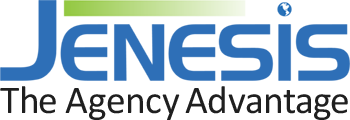
Landing pages on your insurance agency’s website play a crucial role in the success of your marketing efforts. They’re one of the most powerful tools to maximize conversions.
An artfully designed and correctly implemented landing page can help your sales agents capture leads, build lasting customer relationships, and increase sales.
By following best practices for your landing pages, no lead will go to waste.
Use The Right Type of Landing Page
There are different types of landing pages, but they all have the same purpose: turning leads into paying customers. Make sure to use the right type of landing page so you can meet your agency’s marketing goals.
Sales landing page
Sales landing pages are typically what a visitor will land on when they click on an ad in social media or on Google search results. A sales landing page is the most commonly used type of these pages. It often contains only the most important details about a special offer and a checkout button.
Sign-up page
Sign-up landing pages are effective for building mailing lists. When someone clicks the sign-up button, a plugin application saves their email address in the website’s backend.
Registration page
Registration pages contain details of online events visitors need to sign up for. The page will have event details and a sign-up form.
Lead magnet page
Lead magnet pages offer free products or services for exclusive access when visitors submit their email addresses. Freebies are another proven way to build an email marketing list.
Make Visually Appealing, Informative Landing Pages
Ideally, your landing page should not have a navigation menu, footer, or advertising banners. You want your customers to focus on the products they clicked through to the page for. If you must have a footer, only include essential legal information and disclaimers. The goal is to limit any other possible distractions.
The screen that opens when someone clicks through to your landing page should contain all the information they need above the fold. Visitors should get what they are looking for without scrolling much further down.
If you plan to use non-product images on your page, make sure to find images that resonate with your brand and evoke emotion. Emotion-related and lifestyle images are proven to increase conversion rates. You want your potential customers to relate to what they see in these pictures, whether the image is of a family on a beach or a teenager driving his first car.
Furthermore, you should have a single call to action. For instance, don’t ask people to buy the insurance and sign up for email newsletters on the same page.
Use Minimal Copy on Landing Pages
It’s essential to use just the right amount of text on your landing page. If you’re using a landing page to sell a new policy, the only text on your landing page should describe key features of the policy. If you’re giving away a freebie to those signing up for your newsletter, you should only include essential information on the free product.
Don’t forget about the headline. Headlines draw eyes to the page, so make sure you have one compelling enough for potential customers to keep reading. Your headline should highlight the best part of your offer and include a call to action.
Add Positive Reviews to Landing Pages
Reviews can have a hugely positive impact on your landing page’s conversion rate. Adding reviews from well-known companies and individuals indicates that your products appeal to a diverse audience.
You should add reviews near the CTA button above the fold. Alternatively, you can substitute reviews for social proof and add the logos of companies you have active accounts for. You can add logos in an attractive carousel or load them in a flip-board style container that flips over to show the company’s review on the other side.
Conclusion
A well-designed landing page is one of the most effective tools an insurance agency can leverage to increase its conversion rate. Make the best first impression and you will soon see your conversion rate skyrocket.
Need help creating the perfect landing page? Contact our team, today.
